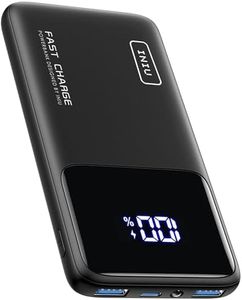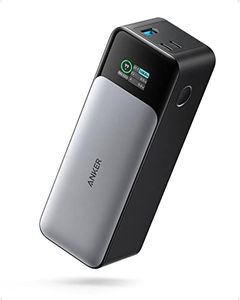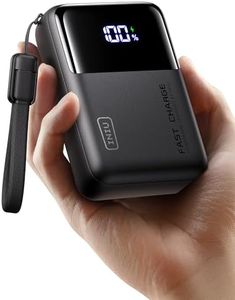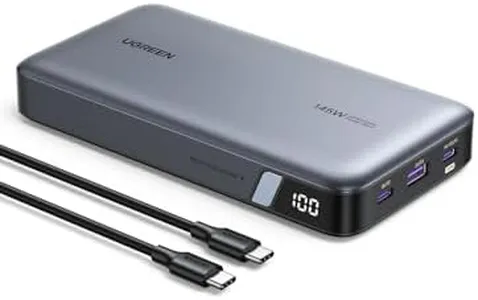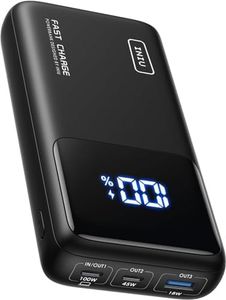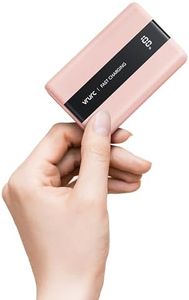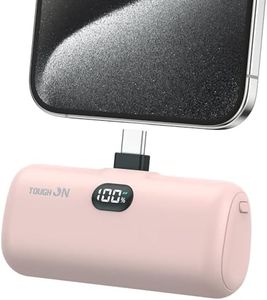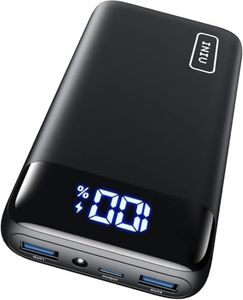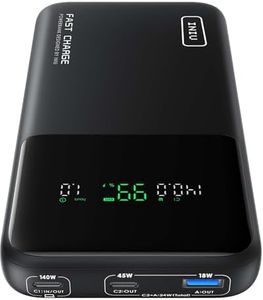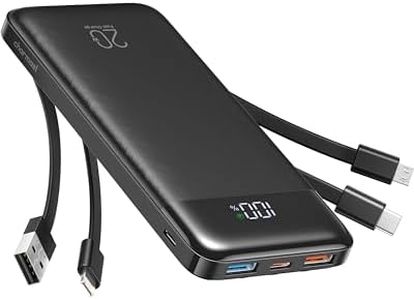We Use CookiesWe use cookies to enhance the security, performance,
functionality and for analytical and promotional activities. By continuing to browse this site you
are agreeing to our privacy policy
10 Best Portable Power Banks
From leading brands and best sellers available on the web.Buying Guide for the Best Portable Power Banks
When choosing a portable power bank, it’s important to consider how and where you’ll be using it. Power banks come in many sizes and capacities, and the right one for you will depend on what devices you plan to charge, how often you’ll need to recharge them, and how important portability is. Understanding the key specifications will help you make a choice that fits your needs and avoids disappointments when you're on the go.Capacity (mAh)Capacity, measured in milliamp hours (mAh), tells you how much charge the power bank can store. A higher mAh means more charging cycles for your devices before the power bank itself needs to be recharged. For reference, small power banks (up to 5,000 mAh) can usually fully charge a phone once, mid-range options (10,000–15,000 mAh) can charge a phone two to three times or a tablet once, and high-capacity ones (20,000 mAh or more) are suitable for multiple devices or longer trips. Consider your routine: if you just need backup for emergencies, a lower mAh is fine; if you travel or are away from outlets for long periods, choose higher capacity.
Output Ports and TypesOutput ports are where you connect your devices to charge them. Pay attention to both the number of ports and their types (such as USB-A, USB-C, or Lightning). More ports mean the ability to charge several devices at once, while modern ports like USB-C can charge devices faster and are compatible with newer electronics. Consider which devices you’ll be charging and make sure the power bank has the right port types and enough of them for your needs.
Output Power (Wattage or Amperage)This refers to how quickly the power bank can charge your devices, usually measured in amps (A) or watts (W). Standard output is around 1A or 5W, which is suitable for phones, but some power banks offer fast-charging with higher outputs like 2.1A/10W or even more for laptops. If you need to charge devices quickly or want to charge tablets or laptops, look for a higher output power; for basic phone charging, standard output is sufficient.
Size and WeightThe size and weight of the power bank affect how portable it really is. Slim, lightweight power banks are easy to carry in a pocket or small bag, ideal for daily use or emergencies. Larger, heavier models tend to offer higher capacity but are best for travel or when you won’t be carrying them around all day. Think about how much weight or bulk you're comfortable carrying with you and balance this with how much capacity you need.
Input Charging SpeedThis spec indicates how quickly the power bank itself recharges, usually noted by the input current (like 1A or 2A) or charging technology (such as USB-C or micro USB). Faster input means less time waiting for your power bank to be ready again. If you often rely on your power bank and need it charged fast during short breaks or overnight, look for models with quick input charging capabilities.
Safety FeaturesSafety features include protections against overcharging, overheating, and short-circuiting. These help protect both your devices and the power bank itself from damage. Opt for a power bank that lists safety features like these, especially if you will be using it with valuable devices or leaving it charging overnight.


